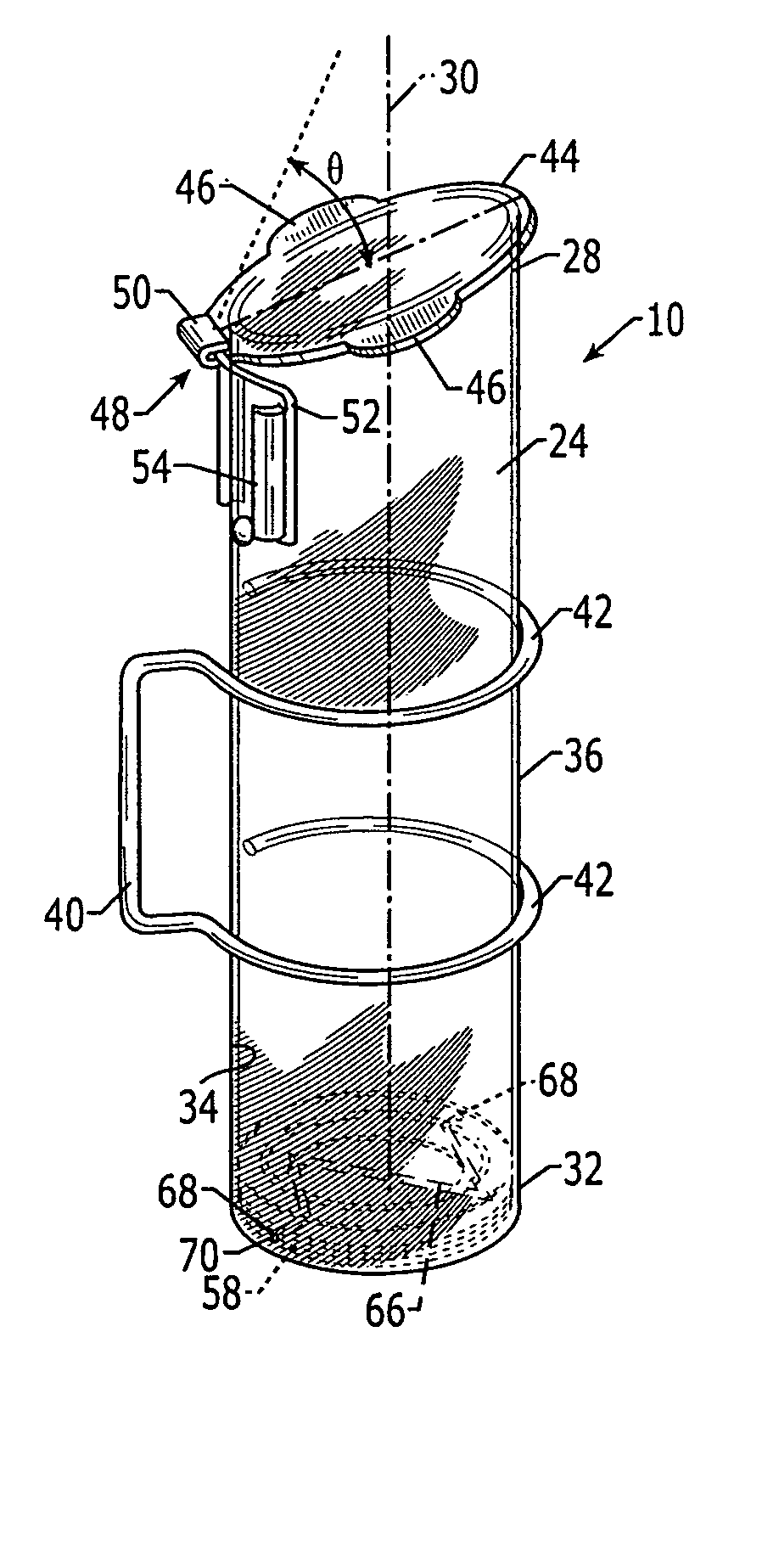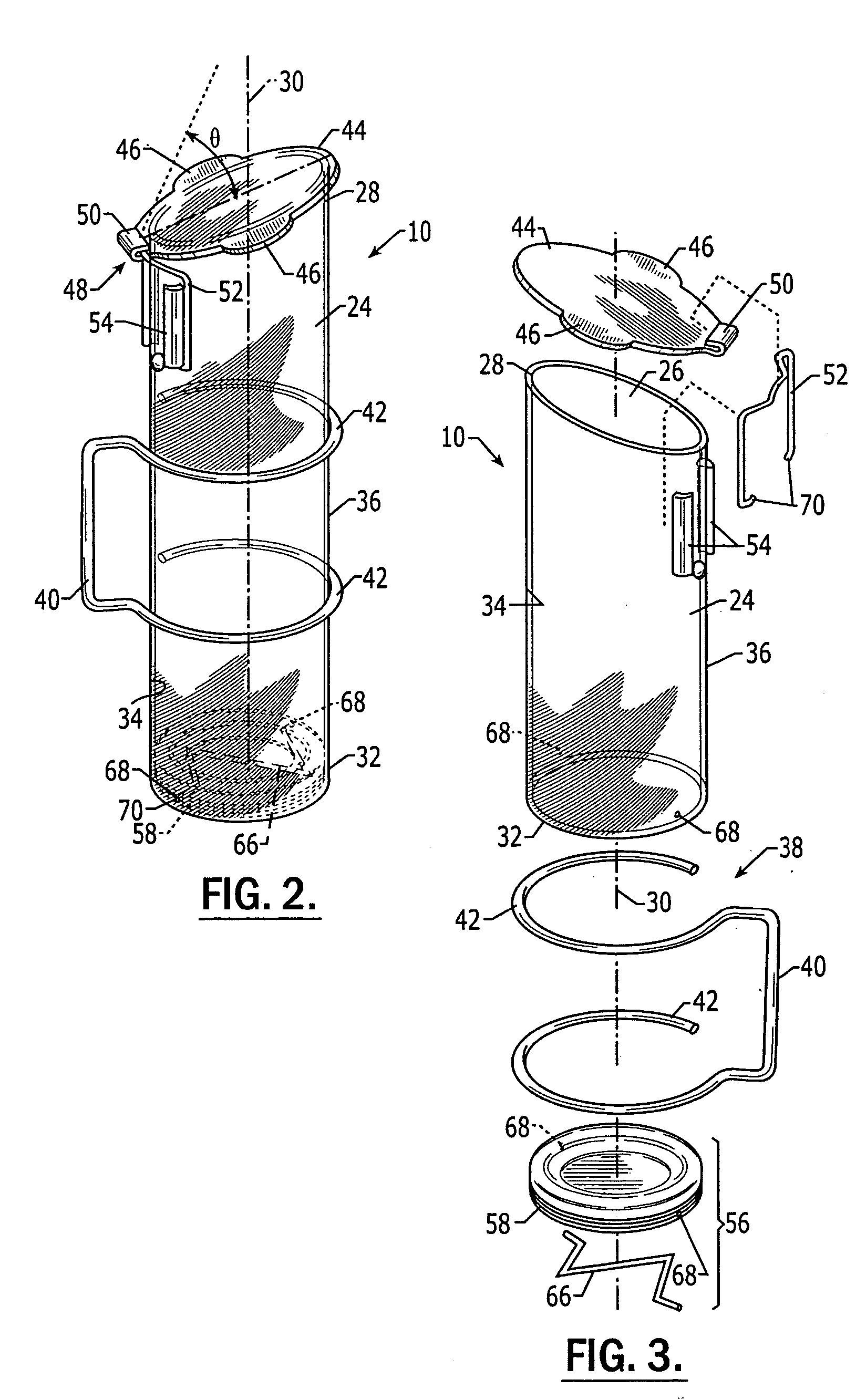Container for dispensing comestibles
a technology for containers and cometibles, which is applied in the field of containers for dispense of cometibles, can solve the problems of difficult, if not impossible, cleaning, and the head of the fastener is exposed in the vessel, and achieves the effects of reducing the possibility of contamination of foodstuffs, and reducing the possibility of contamination
- Summary
- Abstract
- Description
- Claims
- Application Information
AI Technical Summary
Benefits of technology
Problems solved by technology
Method used
Image
Examples
Embodiment Construction
[0026] The present inventions now will be described more fully hereinafter with reference to the accompanying drawings, in which some, but not all embodiments of the invention are shown. Indeed, these inventions may be embodied in many different forms and should not be construed as limited to the embodiments set forth herein; rather, these embodiments are provided so that this disclosure will satisfy applicable legal requirements. Like numbers refer to like elements throughout.
[0027] As shown in FIGS. 1 and 2, a container 10 for dispensing comestibles is provided in accordance with the present invention. The container may dispense a variety of comestibles including, for example, dry cereal and other foodstuffs. Although the container may be utilized individually, a group of containers is oftentimes provided for dispensing different comestibles or different types of the same comestible. For example, FIG. 1 depicts a group of four containers, such as four dry cereal dispensers for di...
PUM
| Property | Measurement | Unit |
|---|---|---|
| angle | aaaaa | aaaaa |
| angle | aaaaa | aaaaa |
| threshold angle | aaaaa | aaaaa |
Abstract
Description
Claims
Application Information
 Login to View More
Login to View More - R&D
- Intellectual Property
- Life Sciences
- Materials
- Tech Scout
- Unparalleled Data Quality
- Higher Quality Content
- 60% Fewer Hallucinations
Browse by: Latest US Patents, China's latest patents, Technical Efficacy Thesaurus, Application Domain, Technology Topic, Popular Technical Reports.
© 2025 PatSnap. All rights reserved.Legal|Privacy policy|Modern Slavery Act Transparency Statement|Sitemap|About US| Contact US: help@patsnap.com



